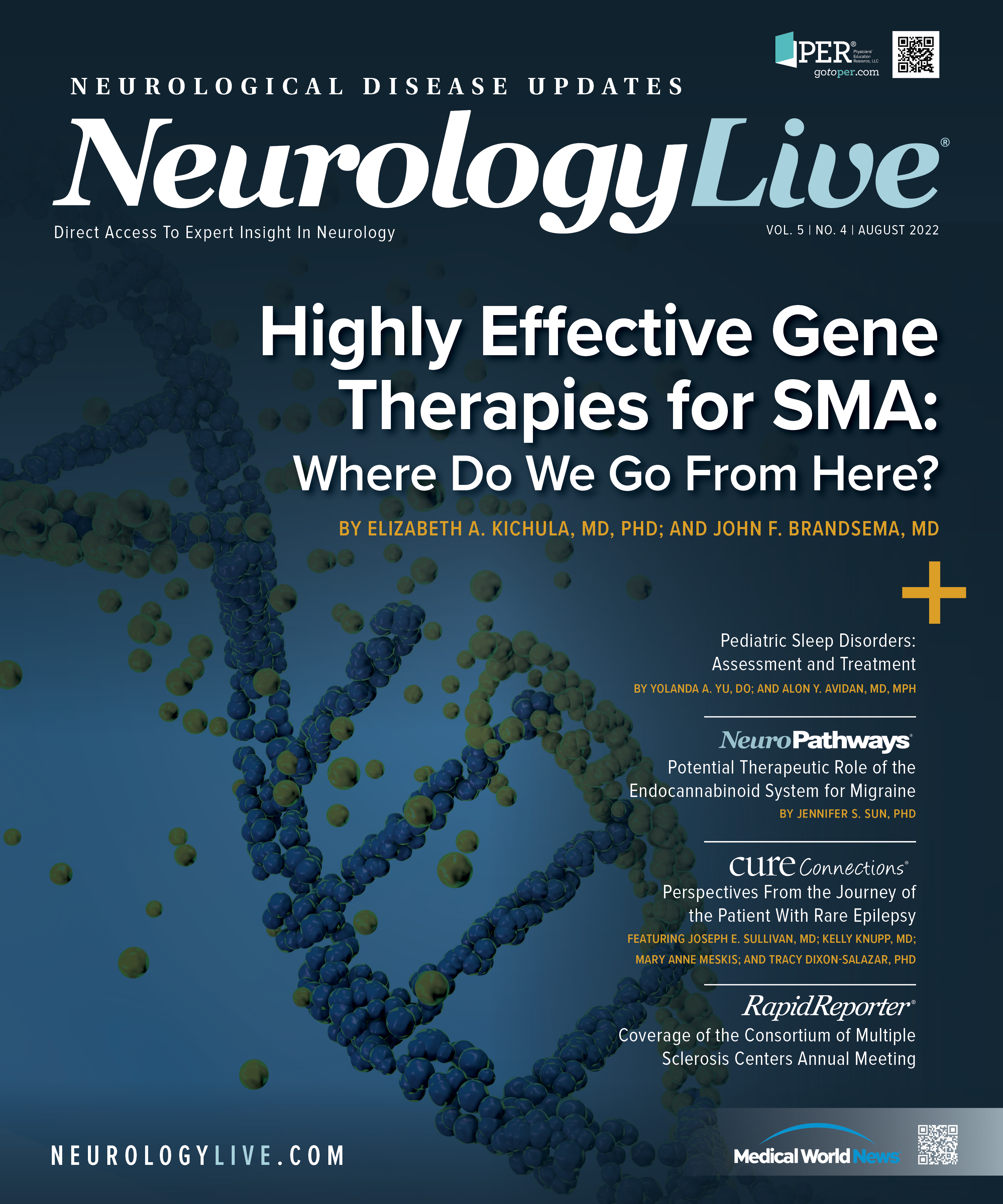Publication
Article
NeurologyLive
MAGNIMS Score Successfully Predicts Risk of Long-Term of Disability Accumulation
Author(s):
In the comparator study between ponesimod and teriflunomide, the risk of both 12- and 24-week confirmed disability accumulation at week 108 was significantly different between MAGNIMS score groups.
Alexander Keenan, MA

Results from a post hoc analysis of the phase 3 OPTIMUM study (NCT02425644) show that use of the Magnetic Resonance Imaging in MS (MAGNIMS) score predicted long-term risk of disability worsening for patients with multiple sclerosis (MS) who had suboptimal response to treatment with either ponesimod (Ponvory; Janssen) or teriflunomide (Aubagio; Sanofi).1
Presented at the 2022 Consortium of Multiple Sclerosis Centers (CMSC) Annual Meeting, June 1-4, in National Harbor, Maryland, participants with MS were randomly assigned 1:1 to either 20-mg ponseimod or 14-mg teriflunomide, the comparator drug; or placebo for 108 weeks. Patients were classified as 0, 1, or 2, on MAGNIMS score at week 60, with higher scores indicating worse clinical outcomes.
Led by Alexander Keenan, MA, Global Market Access Leader, Janssen, significantly more patents taking ponesimod had a MAGNIMS score of 0 at week 60 (57% vs 46%; odds ratio [OR], 1.56; P <.001) and significantly fewer patients were classified as having a score of 2 (13% vs 20%; OR, 0.59; P = .002) relative to those on teriflunomide. To understand whether MAGNIMS scores at week 60 could differentiate the risks of times to 12- and 24-week confirmed disability accumulation (CDA) at week 108, the investigators used Cox regression analysis.
READ MORE: Moderate-to-Severe Post-COVID-19 Sleep Disturbances Common, Especially in Black Individuals
A total of 1061 patients were pooled from the 2 groups (ponesimod: n = 533; teriflunomide: n = 528), with 51%, 32%, and 17%, of patients assigned MAGNIMS scores of 0, 1, and 2, respectively. At week 108, the risk of CDA significantly differed and was predictive of MAGNIMS scores from both the 12- and 24-week CDA. For the 12-week CDA, the HRs were 1.97 (P = .002) for 1 vs 0, and 3.48 (P <.001) for 2 vs 0, indicating that patients with a higher MAGNIMS score at week 60 had a higher risk of experiencing a 12-week CDA. For 24-week CDA, the HRs were similar: 1.99 (P = .007) for 1 vs 0, and 4.14 (P <.001) for 2 vs 0.
"Treatment with ponesimod resulted in more patients being classified with a favorable MAGNIMS score at week 60 than treatment with teriflunomide, but long-term effects on CDA need to be further confirmed in future research," Keenan et al wrote.
Although this was the first analysis using MAGNIMS score to evaluate ponesimod and teriflunomide, the tool has been used in previous studies before. One such 2021 study looked at the association of 1-year MAGNIMS score with long-term CDA in patients treated with interferon beta-1a. In that study, patients treated with the medication 3 times weekly and were classified by MAGNIMS score (0: n = 129; 1: n = 108: 2: n = 130), similar to OPTIMUM. The investigators found that the risk of CDA was higher at 1 year with MAGNIMS score of 1 vs 0 (HR, 1.82; 95% CI, 1.38-2.41), 2 vs 0 (HR, 2.63; 95% CI, 2.01-3.45) and 2 vs 1 (HR, 1.45; 95% CI, 1.11-1.89), all of which were significant (P <.0001). The same outcome was observed with the risk of confirmed Expanded Disability Status Scale progression (1 vs 0: HR, 1.93 [95% CI, 1.23-3.02]; 2 vs 0: HR, 2.95 [95% CI, 1.95-4.46]; 2 vs 1: HR, 1.53 [95% CI, 1.05-2.23]; P <.0001).2
Click here for more coverage of CMSC 2022.
REFERENCES
1. Keenan A, Gandhi K, Le H, et al. Prognostic value of the Magnetic Resonance Imaging in MS Score for assessment of disease-modifying therapy in patients with relapsing multiple sclerosis treated with ponesimod. Presented at: CMSC Annual Meeting, 2022; June 1-4; National Harbor, MD. DMT07
2. Sormani MP, Freedman MS, Aldridge J, Marhardt K, Kappos L, De Stafano N. MAGNIMS score predicts long-term clinical disease activity-free status and confirmed disability progression in patients treated with subcutaneous interferon beta-1a. Mult Scler Relat Disor. 2021;102790. doi:10.1016/j.msard.2021.102790.






